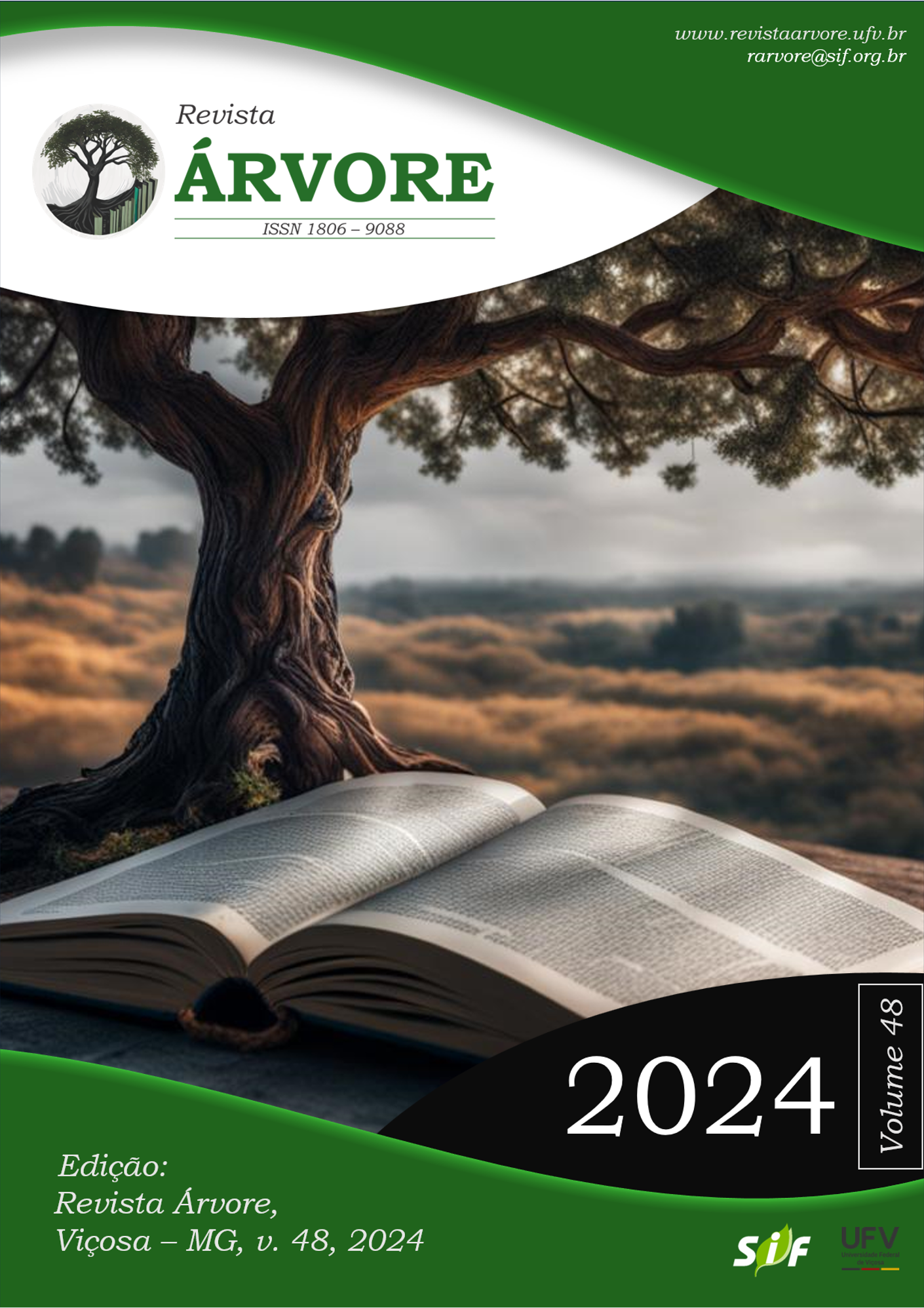Seed osmopriming with salicylic acid on induction of tolerance of Cenostigma pyramidale to water deficit
DOI:
https://doi.org/10.53661/1806-9088202448263630Keywords:
Catingueira, Abiotic stress, PhytohormoneAbstract
Cenostigma pyramidale is an endemic species of Brazil, widely spread in the Caatinga biome. The conditions in the semi-arid Northeastern region of Brazil can affect the development of plants due to the irregularity of rainfall, limiting the availability of water and reducing the germination and initial growth of native species. Therefore, seed priming with salicylic acid may mitigate the effects of water stress on plants. The objective of this work was to evaluate the effect of seed osmopriming with salicylic acid as a water deficit attenuator on germination and initial growth of C. pyramidale seedlings. A completely randomized design in a 5 × 5 factorial scheme, corresponding to five osmotic potentials (Ψs – 0, -0.3, -0.6, -0.9 and -1.2 MPa) and five doses of salicylic acid (0, 0.5, 1.0, 1.5 and 2.0 mM), with four repetitions of 25 seeds, was used. Germination and initial growth of C. pyramidale were compromised by water deficit. Osmopriming of seeds with salicylic acid at a dose of 0.63 mM is an efficient strategy to reduce the effect of water deficit in the germination stage from the potential of -0.2 MPa. The vigor of C. pyramidale seeds increased under deficit conditions with the application of salicylic acid, with the concentration varying from 0.5 to 1.0 mM. Osmopriming seeds with 0.87 mM salicylic acid promotes the development of vigorous seedlings under water deficit conditions.
Keywords: catingueira, abiotic stress, phytohormone.
Downloads
Published
How to Cite
Issue
Section
License
Copyright (c) 2024 Revista Árvore

This work is licensed under a Creative Commons Attribution 4.0 International License.
All authors agreed to submit the work to Revista Árvore and granted the exclusive license to publish the article. The authors affirm that it is an original work and has not been previously published elsewhere. The scientific content and opinions expressed in the article are the sole responsibility of the authors and reflect their opinions, not necessarily representing the opinions of the editorial board of Revista Árvore or of the Society of Forest Investigations (SIF).








